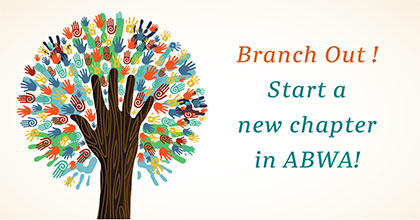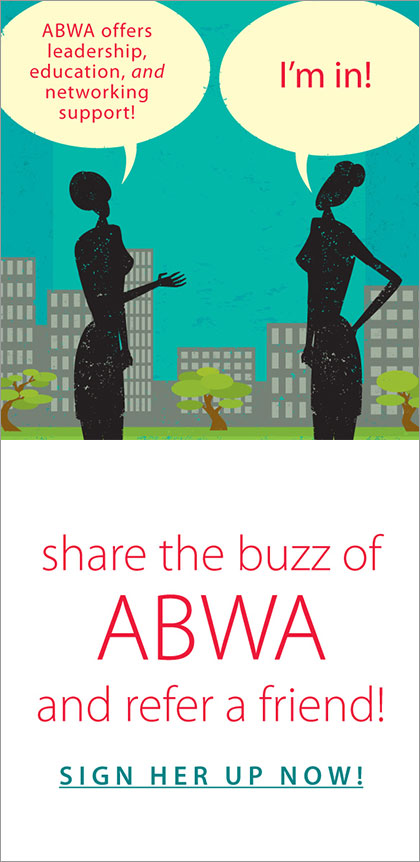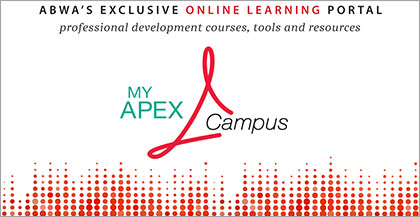
by American Business Women's Association | Oct 21, 2022 | Blog
We live in an upside world where the old rules no longer apply. Many call it a VUCA world – volatile, uncertain, complex and ambiguous. Mass consumerism has been replaced by a new consumption paradigm as people are driven by new essentialism where things matter less and relationships, experiences and self-being dominate all. In this new world, workers are restless, customers fickle, investors skittish, and the public has an appetite to cancel. In order to rally everyone together to stand behind a company and its path during all the ups and downs, leaders need to draw upon emotions as rationality will not carry the day. They have one tool at their disposal to do this delicate work – the brand.
Although often associated with marketing, brands are actually cultural icons that symbolically carry meaning. In just a nano second, they evoke common immediate meaning and emotions across all people. Think BMW, John Deere, Chanel, Apple and American Express. In a world where everything is uncertain, brands can be trusted to stand true. Now, if you don’t have a brand, you can build one. Anyone can. It takes commitment to people, to tell their story and represent their interests with your brand, not your own. If you create a brand that represents the highest common denominator between your people (customers, employees, investors) and your products/services, then you can forge an enduring powerful partnership that will yield surprising dividends for your business. It all begins with understanding the basics of what a brand really means for a business.
ONE – A Brand Resides in the Mind not in a Logo
Although expressed in a logo and a tagline, a brand is actually a mental construct that gets into the mind and lives in the memory of people. Branding is the process of creating the brand in the minds of people. It is typically done by creating things and experiences that “express” the brand such as marketing materials and product design. Brands also live in the culture. Powerful brands like Nike become social concepts and exist in the culture where they continually give people cues and establish the brand as a part of society.
TWO – Brands Set Meaning
Brands give meaning to products. Is an anti-lock braking system (ABS) a breakthrough in performance (BMW) or safety (Volvo)? That depends on the brand. The brand is a mental lens that provides immediate meaning. A Snickers bar is a snack. Tiffany means luxury taste and quality. Apple is about unleashing creativity while IBM is about improving productivity. The brand provides context which tells people why a product is important to them.
THREE – Brands Carry Emotional Power
Like great art, brands are designed to elicit a response, both emotional and rational. Like art they can enchant and often captivate people which creates desire. Marlboro was the first filter-tipped cigarette and was initially launched as a woman’s cigarette which failed. The same product was re-branded as the ultimate masculine smoke and with the swagger of the Marlboro man still remains one of the most powerful brands in the world. Powerful brands are mythologies that evoke emotions that swell to desire.
FOUR – Brands are Fiction Not Fact
Branding is poetry not journalism. Messaging matrixes and value propositions belong to marketers and are fact-based. Branding is another world that is concept-based. Branding brings out the big gun – an idea. A powerful, transcendent, mind-tweaking idea designed to engage the mind and heart at another level. The idea is what catalyzes new behavior and thinking. When Tide gets clothes clean, it means that Mom and Dad are good parents and conveys that message. The Home Depot is a large hardware store, but the brand makes it a Home Center for any current and aspiring do-it-yourselfer.
FIVE – Brands Defy Logic
When you have a powerful brand, you’ll be surprised by what it can do. You will see strong conviction and commitment across employees, customers and investors despite challenges. People tend to defend the brands they love and stay loyal against all odds – better alternatives, cheaper alternatives, easier alternatives. To achieve that kind of priceless cohesion, you have to build and continually maintain the brand campfire – and make it into a bonfire for the whole world to see. At John Deere, they say people bleed green because the brand is so deep.
SIX – Brands Deliver Business Value Multiple Ways
Because powerful brands are sticky, they have the ability to build a moat around the business. Customers remain loyal even in the face of superior performing or lower priced competitors. People forgive and forget product and corporate errors which mitigates losses. People are more willing to try new products, services and experiences from brands they love which accelerates sales. If you have a vision to build an empire, but a brand to amplify the upside and mitigate the downside.
Many corporate executives view the brand as simply a marketing asset. Others like Steve Jobs, Bill Gates, Richard Branson and Elon Musk view it as a corporate asset, part of the business strategy. Once built, a powerful brand can be used to wield influence in many circumstances from the Main Street to Wall Street to Capitol Hill. While products and executives may come and go within a company, the brand can endure forever – as long as it is well maintained.
In a world of fake news where people are becoming increasingly unmoored and where constant shocks and disruptions seem to prevent ‘normal’ from ever being a reality, brands are a reassuring presence that people can depend on. Powerful brands nurture, the people that come to work, buy products and invest in companies. Business always comes down to connecting with people on a human level. Powerful brands are creative concepts that stimulate the imagination and emotions in ways that most CEOs cannot. With a powerful brand, the CEO has a tool to open minds, raise hearts, command attention, bring everyone together and protect the business again in a volatile, uncertain, complex and ambiguous world.
About the Author: Jane Cavalier, CEO and Founder of BrightMark Consulting, is a nationally recognized brand strategist, board member, blogger and author of bestselling business book The Enchanted Brand (Amazon). She helps organizations conquer a changing world with powerful brands and reputations. Recognized for creating breakout brands like Snapple and Qwest, Jane has worked with over 100 organizations including American Express, Johnson & Johnson, ExxonMobil and the U.S. Navy. For more information, visit www.brightmarkconsulting.com.

by American Business Women's Association | Oct 14, 2022 | Blog, Uncategorized
No single person, no matter how intelligent or experienced, can understand everything there is to know about a given job. Questions will come up, and when they do, the individual – whether a software developer, project manager, sales engineer – or any other title, needs to have a handle on the specific support that is needed, and how to ask for it.
With more people working remotely than ever before, this topic is emerging as a persistent issue. This is particularly true in fields like tech, in which teams must understand how to quickly resolve network and other systemic breakdowns and problems. Here are some ideas how to overcome lack of on-the-job support and seek help:
- Be sure to reach out to the right person. Many times, unhelpful or unsupportive people are acting out of lack of knowledge. Before you text, email, or phone, consider if you are contacting the correct individual. This person may have taken a different position in the company and is no longer current on the issues you need. If you require specific examples of what to do, reach out to someone good at providing practical advice – not someone who offers platitudes like, “You’re smart, you’ll figure it out.”
- Understand the support you need and ask for it Make it clear to colleagues and supervisors alike where you need help. Do you need support on a particular problem? Do you require assistance to better understand the project in its entirety? Perhaps you need to just grasp your specific role in it? Maybe you need greater flexibility to make a deadline. What is it, exactly, that you need? It’s not a good idea to assume that people will automatically know. Tell them.
- Set realistic expectations of others. Many times, people are weathering enough challenges of their own to help out. They may not have the time or resources to be as supportive as you’d like them to be. Is it possible you’re asking for too much? This is where realistic expectations come in. Be sure you’re asking for assistance, nothing more. If your requests are excessive, you will need to start giving back before you can expect any support in return.
- Lack of support often means lack of communication. It can prove difficult to obtain the help you need if there is a big gap in communication. An outgoing person may be happy to talk at length about your problem. But if you assimilate information better by watching a video that explains the issue, contact a colleague who will use a platform like this to help. You may not “get” what the other person is saying or the individual you’re asking might not understand your request because of a communication gap.
- Network, network, network. You can never know too many people! If a trusted colleague quits to take another job with another company and you’ve relied on him exclusively, what then? The plain fact is that people move away, retire, etc. As noted earlier, no single person knows everything. A network of trusted friends, coworkers, mentors, and the like can help in areas where help and support may be lacking. A change of perspective may be what you need instead of relying on the same person.
- Finally, be sure you are willing to accept criticism. We all like to give good advice but we are sometimes awful at accepting the advice of others as it forces us to admit our weaknesses. It’s normal for an individual to think they know more than they actually do. Remember, there is a reason you asked for assistance. Don’t take their suggestion personally. Consider if doing what the person advises will help you professionally. If it will, do it!
In conclusion, never assume a colleague, supervisor or manager understands what you are asking. Don’t rely on a single coworker for assistance and be sure to reach out to the person who can address your problem best. Good luck!
About the Author, Susanne Tedrick
Susanne Tedrick is an infrastructure specialist for Azure, Microsoft’s cloud computing platform. In her work, Susanne helps her clients address needs and challenges surrounding cloud adoption, cost optimization and migration. Susanne is the author of the critically acclaimed “Women of Color in Tech” and the upcoming “Innovating For Diversity”. For more information, please visit: www.SusanneTedrick.com.

by American Business Women's Association | Aug 27, 2021 | Blog, Uncategorized
Regardless of what date the calendar shows, business is blooming – and the season for sowing success is officially here. The ways businesses can promote themselves is blooming, too – blogs, podcasts, social media, website search engine optimization, television, magazines! How can business owners, subject matter experts, and thought leaders weed out what will land on the rocks and what will bear fruit when it comes to publicity?
You see, a targeted publicity campaign is much like gardening. It requires an innate understanding of the medium where your expertise best fits, properly nurturing the attention that you generate, and reaping the rewards of increased awareness of your unique space in the business market.
So where to start? The soil, of course!
The Soil – Your Market
A successful publicity campaign starts with deep knowledge of where your knowledge works. Whether you excel at providing management solutions or the art of making the most of the clock, you don’t simply want to blast out your content like a defective garden hose. Just like different substrates, different avenues exist for your expertise – and you need to choose the one that’s best for your expressed goals.
Whether that means pitching your content out to a specific geographic area or DMA that pertains to a coming event, or providing comment on a national news story, you have to possess a keen awareness of where your knowledge best fits and the outcome that you’re hoping to elicit.
Sowing – Targeted Pitching
Just like you shouldn’t take a scattershot approach to planting seeds you hope will eventually produce fruit, you shouldn’t assume you can just cover each and every aspect of the media with a publicity campaign. It’s about targeted pitching of content to editors, writers, and producers.
Plant your expertise seeds where you have the strongest opportunity for success. That means having a firm grasp on your target market where you know you have a strong shot of developing enduring roots – not just a momentary glimpse of sunlight.
Nurturing – Building Relationships
Anyone who has ever seen that first seedling sprout in their garden or field knows that immediate feeling of elation. Things are happening! I wasn’t just tilling and watering this soil for no reason! It’s a burst of excitement in knowing that your work had paid off. But those same folks will can also identify with watching their work wilt on the vine and the inescapable thought that more could have been done.
Once you have started the process of pitching out your expertise – be it to daily newspapers in the form of interview availability, or articles to trade, industry, and association publications, it’s imperative that you nurture those leads by properly tracking and following up with the editors who have requested your comment or content.
One of the biggest mistakes that is made during a publicity campaign is fostering a one-sided relationship. Each one of those columnists and editors is looking to fill space with intriguing content on a consistent basis. Just like you wouldn’t prune your leaves or fertilize all at once when it’s convenient, you need to maintain a dialogue with those who are looking to you for answers.
That doesn’t mean to bombard them with emails or phone calls—it simply entails having a firm process in place to touch base on the status of your article or interview, and be ready to reach out when a mutually beneficial opportunity arises.
The Harvest – Frequency and Repetition
The pinnacle of sowing season is the harvest—where you can reap the rewards of your time, efforts, energy, and dedication. After months of tending to your crops, it’s finally time to take out your bushels and account for your yield.
In a PR campaign, the sowing season runs year-round as a well-targeted campaign means you’ll receive a bounty of coverage on a consistent basis – regardless of the date on the calendar.
To the Market – Benefiting from Publicity
Off to the market with your haul! This is where the hard work really pays off and you can assign a definitive, tangible value to the time investment to planting, tending, and harvesting your crop.
With publicity, post-placement marketing is a key, critical component in a campaign’s life cycle. Without effective marketing to the associations and industries who utilized your expertise in their publication you cannot truly capitalize on the commitment you made to growing your business or enhancing your audience at the outset.
Effectively marketing the publication that you receive involves outreach to the industries who found direct value in your content—be it your perspective in an interview or your unique selling propositions in articles. Without leveraging these placements and marketing to those industries, you’ll be left with a bounty without a buyer.
With business back in full bloom, events are currently being planned and organizations are seeking experts to enrich their audiences with their point-of-view. To enjoy the full range of benefits of a publicity campaign you must think like a farmer or gardener—determine the fertile soil for your content, sow the seeds of your expertise with targeted pitching, with a green thumb frame-of-mind (in a monetary context, of course), nurture the relationships built, and then leverage your placements to begin marketing your content.
As the gardeners and farmers among you know, it doesn’t happen overnight. But with time, care, and dedication you’ll enjoy the rewards of a fruitful publicity endeavor.
About the Author:
Russell Trahan is the Owner/President of PR/PR Public Relations and the Author of Sell Yourself Without Saying A Word. PR/PR/ Public Relations is a boutique agency specializing in thought-leaders and subject-matter experts. He positions his clients’ expertise in front of their target market. PR/PR Public Relations has a 20+ year history of getting 100% of their clients results. For more information, please visit: www.PRPR.net.

by American Business Women's Association | Sep 16, 2019 | Blog, news
ABOUT THE AUTHOR: Kate Zabriskie is the president of Business Training Works, Inc., a Maryland-based talent development firm. Kate and her team help businesses establish customer service strategies and train their people to live up to what’s promised.
Zombies in the workplace are soul-sucking, money-draining, productivity-killing entities that chip away at an organization’s spirit and its engagement levels one convert at a time. These creatures often look like the rest of us, but deep down they’re cancerous beasts that can potentially drive a business to ruin.So what’s a manager to do? Recognize the problem, know its source, understand why action is essential, and then do the work required to create a zombie-free workplace.
KNOWING YOUR ZOMBIES
Although zombies come in many varieties, most resemble one or more of the following:
- Negative zombies – Often the easiest to spot, they complain, moan, and express their dissatisfaction regularly. Some will use humor to disguise their disgust, but they are nevertheless contagious and a threat to the uninfected.
- Minimum-contributor zombies – They do the basics but nothing more. You will never see them looking for work or volunteering for projects. Furthermore, many act as if they are doing you a favor when you ask them to perform a task they get paid for doing.
- Status-quo zombies – These change-averse creatures dig in their heels and fight the future. They are happy with everything the way it is and take no initiative to implement new ideas. The most dangerous of this variety will even resort to sabotage if they feel threatened.
- Shortcut zombies – They find ways to cut corners and circumvent processes. Their choices frequently expose the organization to unneeded risk. Worse still, when these zombies are in charge of training others, they pass on bad habits and poor practices.
IDENTIFYING THE SOURCE
To rid an organization of zombies, you must understand how you got them. Each zombie has a creation story. These are the most common:
- The ready-made zombie story: People who were really zombies when someone interviewed them, and they got the job anyway.
- The we-did-it-here zombie story: Unlike the ready-made zombies, these zombies were created after they joined the organization. They were discouraged, taught to fear, or worse.
- The retired-on-the-job zombie story: These zombies should be long retired, but because of a need to complete a certain number of years of employment before receiving some financial reward or other benefit, they’re still in the workplace and just going through the motions.
- The abandoned zombie: Abandoned zombies are employees who could perform well if they didn’t feel as if they were the only ones who cared. After struggling alone, these poor creatures eventually succumbed and now just try to survive.
MAKING THE CHOICE BEFORE IT’S TOO LATE
When left unchecked, zombies can take over a department, division, or even an entire organization with relative ease. For that reason, it is essential that organizations are focused and vigilant in their approach to zombie management. Organizations that fail to take the problem seriously may find that it’s too late. To escape havoc when zombies gain a foothold, good employees will often leave for safer territory. Then, by the time management recognizes its predicament, a lot of talent has walked out the door, and what remains is not sufficient to do great work.
TAKING ACTION
Implementing an anti-zombie initiative is no easy task, but it can be done and done well if you take the process seriously and stay dedicated to invigorating your workforce.
Step 1
Be candid about your numbers. High turnover is a strong sign that there is a zombie problem. High absenteeism, poor output, and substandard financial performance are other clues. Think about what you would see if your organization were-zombie free and what numbers would be associated with that vision. Next, compare those statistics to the current reality and set some performance goals.
Step 2
Once you understand your global numbers, you should measure employee engagement. You can run a formal survey with a company that specializes in engagement or create one on your own. As with step one, the goal here is to get a sense of what’s working, what isn’t, and the breadth of your zombie problem.
Step 3
Next, ask yourself what are you seeing and hearing that you don’t want to see, and what are you not seeing and hearing that you do? After you know where the gaps are, think about solutions to address those shortcomings. If your zombies belong to the status-quo category, for example, consider putting in a process whereby everyone is tasked with finding two ways to improve his or her work processes or outputs. No matter what you choose, be sure you have the stamina to stick with the zombie-eradication tactics you implement. Fewer activities done well will beat a lot of mediocre ones every time.
Step 4
Be prepared to let go of those you can’t save. Despite best efforts, some zombies simply can’t be cured. If you’ve done all you can, and they’re still the walking dead or worse, it’s time to say goodbye. If the termination process in your organization is cumbersome and lengthy, at a minimum, you must protect the uninfected and recently cured from the zombie holdouts.
Step 5
Recognize success and coach for deficiencies. Saving zombies happens one employee at a time. People who are clear about expectations, receive proper training, get coaching when they miss the mark, and feel appreciated when they get it right or go above and beyond, are highly unlikely to enter or venture back into zombie territory.
ASK
- Do managers “walk the talk” and model anti-zombie behavior?
- Do employees understand how their work is connected to the organization’s goals? Can they explain that connection in a sentence or less?
- Are employees held accountable for following established processes and procedures?
- Do managers confront negativity?
- Do managers encourage and reward initiative?
- Do they meet one-on-one with their direct reports on a regular basis?
- Does a strong zombie pre-employment screening interview process exist?
- When good people leave, does someone conduct an exit interview to see if zombies are the reason for the departure?
The answers to those questions should serve as a starting point for encouraging engagement and avoiding everything from a small zombie outbreak to a full-blown apocalypse. You can never be too prepared.

by American Business Women's Association | Jul 17, 2019 | Blog
 Have you ever said something at work you wish you hadn’t? Sometimes the wrong words just blurt out to employees or with the client. The first step in fixing common communication blunders on the job is to know what those blunders are. Then you can say something the smart way and not the dumb way. Verbal communication expert, Greg Alcorn, CEO of Global Contact Services (GCS) of Salisbury, NC, is the author of 7 Dumb Things We All Say and speaks to thousands of people each year on improving verbal communication at work.
Have you ever said something at work you wish you hadn’t? Sometimes the wrong words just blurt out to employees or with the client. The first step in fixing common communication blunders on the job is to know what those blunders are. Then you can say something the smart way and not the dumb way. Verbal communication expert, Greg Alcorn, CEO of Global Contact Services (GCS) of Salisbury, NC, is the author of 7 Dumb Things We All Say and speaks to thousands of people each year on improving verbal communication at work.
BELOW, GREG HAS LISTED THE SEVEN BIGGEST BLUNDERS YOU MAY NOT HAVE USED, BUT HAVE DEFINITELY COME ACROSS!
ONE: Using Bad Bookends. The biggest blunder is starting and ending what you say with the wrong phrasing. Conversation bookends are the small comments or questions just before or right after a full statement or request for action. Be better with your starting and ending bookends. Pre-sentence bookends as a tool can be engaging, demeaning, or distracting. Names are great bookends. Starting a sentence with the name of the person you are talking to warms that person up. “Mary, may I put you on hold?” Saying your name last in your introduction makes it easy for the person you are talking with remember your name. “This is the help line; my name is Jack.”
TWO: Starting with Wrong First Words. Are you familiar with the adage, “Getting off on the wrong foot”? Conversations have first impressions, and they begin with your first three words. Hint: one of the words should be the other person’s name. Using names is important when speaking on the phone, especially conference calls. Conference call principle number one is if you’re going to call on somebody, start with the name. Instead of saying, “What were the metrics on our operations yesterday, Frank?” ask the right way: “Frank, what were the metrics on our operation yesterday?” If you don’t start with the name, you might catch the person by surprise. It certainly catches people’s attention when you say their name first.
THREE: Not Choosing Your Words Well. The words you choose paint a picture for the listener. Your words express your attitude and your personality. Keep it positive. Don’t start a sentence with the word “no.” Even in introductions, you can’t go wrong with saying the person’s name first. A person’s name followed by the four words “I need your help” is a winner. “Rachel, I need your help.” This is especially powerful when it’s in a situation in which you might be the boss and the other person might be a manager, or you might be in a perceived superior position.
FOUR: Poor Questions and Bad Listening. Meaningful questions always stay on subject, keep a conversation moving forward, and ensure the other person feels heard and understood. Becoming a better listener is easier than you might think. It starts by committing to be a great listener and making an active choice to listen. Ask good questions and really listen. This is the “You have two ears and one mouth” principle.
FIVE: Focus-on-Me Attitude. Making it all about you is a turn off for them. This is not a technique; this is an attitude. The best way to describe a benefit is to describe the feeling received. “I came by as soon as I heard you lost the sale; I’m sad.” The fellow employee can recognize the extra effort and surely appreciates the sentiment. It’s a powerful sentence. A special visit, a sense of urgency, and a sincere feeling (sad). Empathy shows feelings.
SIX: Wrong Tone. People feel more comfortable with pleasant, variable tone quality. Voice tone is made up of rate, pitch, and volume. Think tone and don’t drone. The tone of our voice helps others to hear our empathy. The rate, pitch, and volume of our statements of empathy helps express feelings. Usually, but not always, we hear implied empathy when somebody slows down speech and lowers the pitch and volume. Say, “I am sad to hear that you lost the supermarket account,” and I’ll bet you will automatically say it slow and low. The same with excitement at the opposite end of the spectrum. Say “Team, we won the hotel account!” You can’t help but say it fast, high, and loud. Tone expresses empathy.
SEVEN: Not Diffusing Difficult Drama. Stressful conversations, or drama, can be avoided by mastering word selection, listening, and questioning skills. Drama can be inevitable, however. Most stressful situations can be defused when you apply the three Rs: recognize, restate, and reassure. Ask others: “What would you like to see happen?” Those are seven magic words that can defuse difficult drama: Words are just a tool, like electricity is a tool. And like any tool, they can be used for helping or for harming. Electricity can cook a person’s dinner, or it can burn a person’s dinner. Words can turn people on or turn people off.
Here is the bottom line: Nobody wants to say dumb things. But we all do. The first step towards reducing the number of dumb things you say is to know what the dumb things are. Then don’t say that, say something smarter.

by American Business Women's Association | Mar 24, 2019 | Blog
Written by Executive Leadership Coach, Denise Louise Jeffrey
Whether pushing for promotion, bargaining for extra budget or trying to convince a client to get on board, negotiation is a necessary part of business life. Most of us aren’t born with this skill, but it’s well worth taking the time to conquer for the benefits that it can bring – from forging better business relationships to reaping great rewards… whatever they may look like for you. With insight from Executive and Leadership Coach Denise Louise Jeffrey, here’s how to influence your way to great negotiations and seal the deal:
BE PREPARED…
One of the most important things to do when negotiating, is to put in the groundwork before anything begins. A common combination, and a vain one at that, is to be overconfident but under-prepared. Always take time to put the research in, and make sure you know what you’re getting yourself into. If you know who you’re meeting, carry out some background research, perhaps familiarizing yourself with their role and career trajectory. Also educate yourself on the project at hand, so that you’re well positioned to address any questions that may arise, and provide answers backed up by cold, hard facts.
BE ATTENTIVE…
Being attentive takes on many types of meaning in negotiations. No matter who you’re up against, always take the time to listen and show that you’re taking on board what they say. This is a two-way street, and there needs to be a mutual respect and understanding for what one another wants from the meeting. But being attentive also means being observant of their behavior, and as Denise suggests, you should use this to negotiate “with an outlook of achieving different outcomes that could be acceptable for all, depending on the style of bargaining your counterpart pursues.” Being able to pay attention to and, recognize their tactics, is key. This leads us onto the final step
BE ADAPTABLE…
As Denise tells us, negotiation isn’t a one-solution situation, and what works for one person may not work for the next. Being able to adapt based on your negotiator’s behavior is a key part in increasing your likelihood of success in the transaction. According to Denise, you can do this through noting their negotiation traits, which have been broken down into four archetypal types: The ‘My Way or the Highway’ type, the ‘Sweet Talker’ type, and the ‘Devil’s in the Details’ type and the ‘Let’s Not Rock the Boat’ type. The key is to then meet them on their level, unless – and this is one exception to the rule – they are being inappropriate or aggressive, in which case, call them out for their unprofessionalism and part ways. Denise’s recommended negotiation approaches are tailored to each category.
Ultimately, the most valuable skill a negotiator can possess is “being able to adapt and negotiate in all styles – not just the one you are most comfortable with.” Being prepared, attentive, altering your behavior based on theirs, and adapting accordingly on the day, is what will give you the highest chance of the best possible outcome.






 Have you ever said something at work you wish you hadn’t? Sometimes the wrong words just blurt out to employees or with the client. The first step in fixing common communication blunders on the job is to know what those blunders are. Then you can say something the smart way and not the dumb way. Verbal communication expert,
Have you ever said something at work you wish you hadn’t? Sometimes the wrong words just blurt out to employees or with the client. The first step in fixing common communication blunders on the job is to know what those blunders are. Then you can say something the smart way and not the dumb way. Verbal communication expert, 


